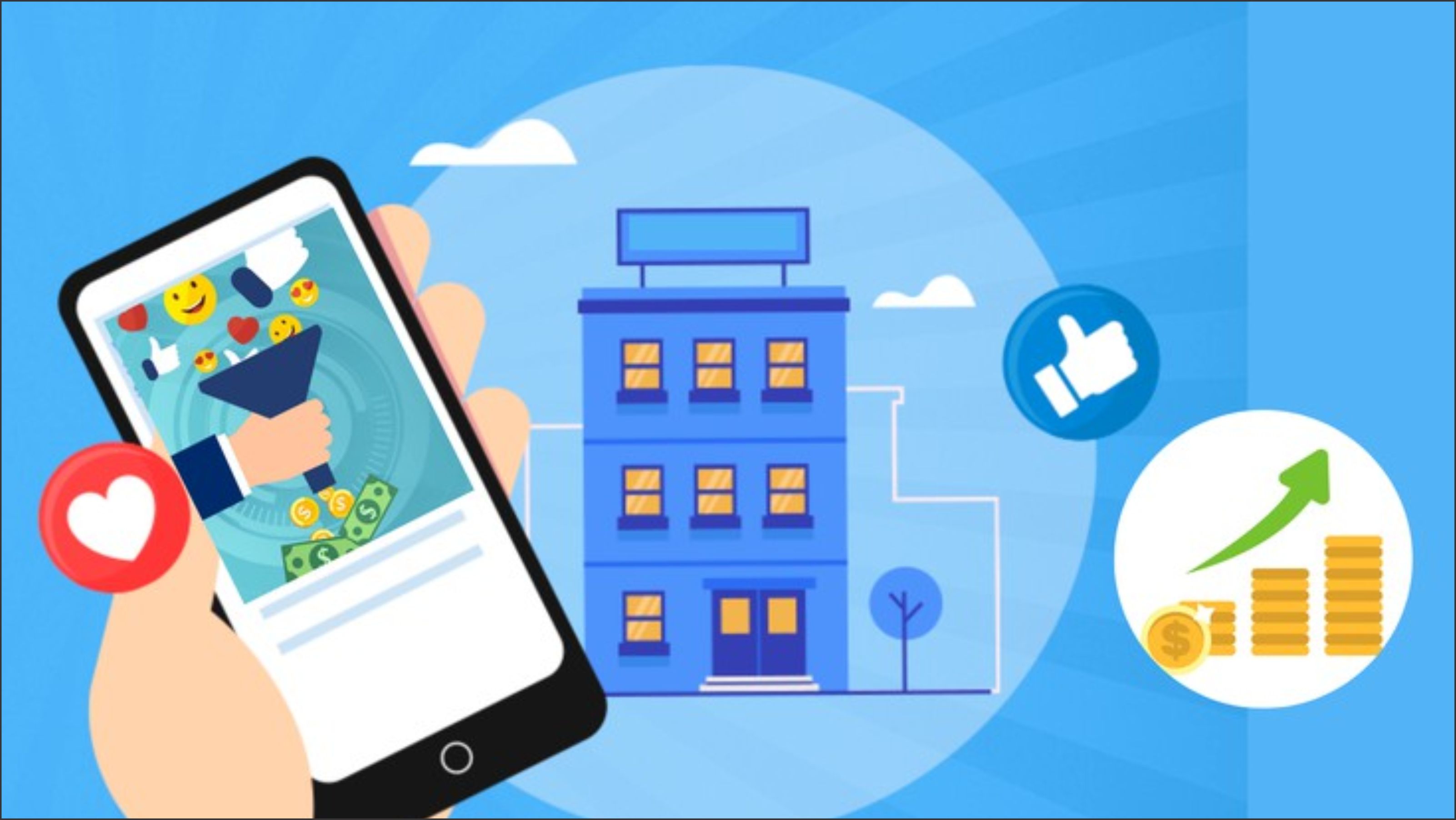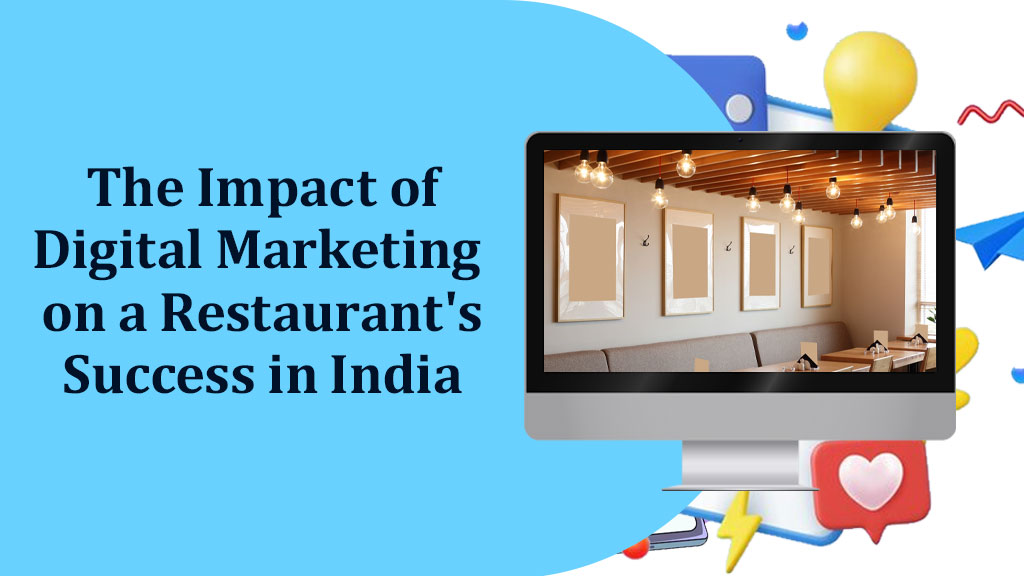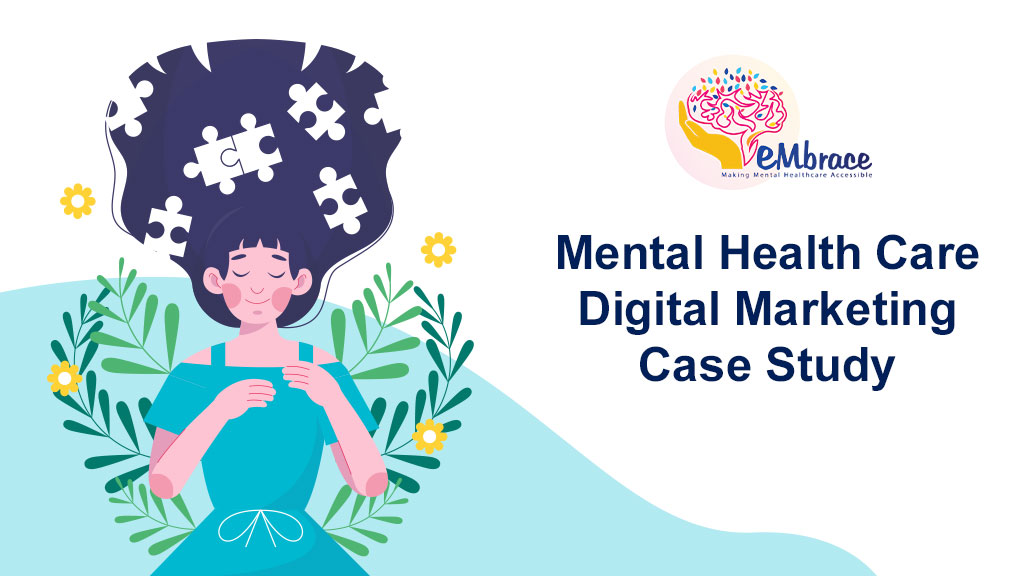
Sell all residential and commercial flats in Baner within 3 months.
Pune Dreams Home, a real estate camel partner, faced the challenge of selling a large inventory of residential and commercial flats in the highly competitive Baner area within a short 3-month timeframe. Despite the saturated market, they successfully sold all units by implementing a strategic marketing and sales plan that targeted the right audience, leveraged digital marketing, and created urgency through innovative sales techniques.
This case study will explore the strategies that led to their success.
Baner, a bustling suburb in Pune, has seen rapid development, with numerous residential and commercial projects vying for attention. Pune Dreams Home’s project included:
· 100+ residential flats ranging from 1BHK to 3BHK units.
· 20 commercial spaces suitable for retail outlets, cafes, and small offices.
The challenge was to differentiate their project in a crowded market while targeting the right buyers and closing deals quickly.
Highly Competitive Market: Baner is home to many real estate developments, and standing out in such a busy market was a significant challenge.
Limited Timeframe: Pune Dreams Home had only 3 months to sell the entire inventory, which required a fast-paced and targeted sales approach.
Varying Buyer Profiles: The residential and commercial properties targeted different buyer segments, each with its own set of requirements.
COVID-19 Impact: The lingering effects of the pandemic created uncertainty in the market, with potential buyers being cautious about making big investments.
Pune Dreams Home adopted a comprehensive strategy that integrated marketing, sales, and customer relationship management to achieve its goals. The key pillars of the strategy were:
To maximize outreach within the limited time frame, Pune Dreams Home leveraged the power of digital marketing to connect with potential buyers. The digital marketing strategy included:
The team used hyper-localized Facebook and Instagram ads to target individuals based on their location, income level, and behavior. This allowed them to reach prospective buyers in Pune, particularly in areas with high interest in residential or commercial investments.
Targeting Parameters: Age (25-50), Income group (Upper-middle and High), Interests (Real Estate, Investments, Entrepreneurship).
Content: High-quality images, videos, and 3D walkthroughs of the flats and commercial spaces.
Call-to-Action (CTA): “Book a Visit Today” and “Exclusive Launch Offers.”
b. Google Ads and SEO
Pune Dreams Home invested in search engine optimization (SEO) and Google Ads to ensure their project appeared at the top of search results when potential buyers searched for properties in Baner.
SEO Strategy: Optimized the project website with targeted keywords like “flats for sale in Baner,” “commercial spaces in Baner,” and “new properties in Pune.”
Google Ads: They ran targeted pay-per-click (PPC) campaigns for key terms that buyers typically search, offering immediate virtual tours and booking options directly from the landing page.
c. Email Marketing
To nurture potential leads, the company also created segmented email marketing campaigns. Prospects who visited the site or engaged with ads received follow-up emails showcasing the property, special offers, and upcoming events like “Open House Days.”
One of the key marketing moves was creating engaging, immersive experiences for potential buyers without them having to visit the site physically. This was especially important in a post-pandemic world, where in-person interactions were limited.
a. 3D Virtual Tours
Pune Dreams Home invested in 3D virtual tours of their flats and commercial spaces, allowing prospects to explore the properties online. This enabled them to highlight the aesthetics, architecture, and features of the units effectively.
b. Video Testimonials
The company created video testimonials from early buyers and industry experts to build trust and credibility. These testimonials were shared across all platforms, further convincing potential buyers.
c. Drone Footage
To showcase the location’s beauty and connectivity, they used drone footage to give buyers a bird’s-eye view of Baner’s growing infrastructure, greenery, and proximity to key areas in Pune.
In addition to marketing, Pune Dreams Home used several techniques to create urgency and motivate potential buyers to make quick decisions.
a. Limited-Time Offers
They launched exclusive early-bird offers, giving discounts to the first 20 buyers and adding perks such as free interior design consultations, a year of free maintenance, or attractive payment plans (like “Pay 10% now, balance on possession”). These offers generated significant interest from early buyers.
b. Festive Season Promotions
They timed their promotions around key Indian festivals like Diwali and Dussehra, offering festive discounts, zero GST on select units, and gold coin giveaways with each booking. These offers played into the cultural sentiment of making big investments during auspicious times.
c. Referral Bonuses
Existing buyers were encouraged to refer their friends and family through a referral bonus program. For every successful referral, buyers were rewarded with cash or maintenance waivers, making it a win-win situation.
While digital marketing helped generate leads, Pune Dreams Home understood that personal interaction is crucial in closing high-value real estate deals.
a. Personalized Follow-Up
Each lead that interacted with the brand received a personalized follow-up call or message. Pune Dreams Home set up a CRM system that tracked each lead’s journey and ensured prompt responses from the sales team.
b. Exclusive Invitation-Only Events
To give buyers a sense of exclusivity, Pune Dreams Home hosted private, invitation-only open house events. These events allowed potential buyers to experience the flats and commercial spaces firsthand, interact with architects, and see the unique features in person.
c. On-Site Sales Team
The company maintained a highly trained on-site sales team that provided guided tours to potential buyers and addressed their concerns. This helped them build relationships and instill confidence in the project’s quality and long-term value.
Pune Dreams Home collaborated with real estate agents, influencers, and financial institutions to expand their reach and credibility.
a. Real Estate Agents
They partnered with top real estate agencies in Pune to ensure their listings reached a larger audience. The agents were incentivized with competitive commission structures to prioritize selling Pune Dreams Home’s properties.
b. Influencers and Local Community
Real estate and lifestyle influencers were brought on board to showcase the properties and amenities in Baner, targeting a more extensive audience through Instagram, YouTube, and local blogs. Additionally, the company engaged with the local Baner community by sponsoring events and associating themselves with the development of the neighborhood.
c. Financial Tie-Ups
Pune Dreams Home partnered with banks and NBFCs (Non-Banking Financial Companies) to offer easy home loan options with competitive interest rates. On-site loan approval counters were set up during the open house events, simplifying the purchase process for buyers.
The results were impressive. Within the 3-month timeframe, Pune Dreams Home was able to:
Sell all residential flats by offering exclusive early-bird offers and leveraging their digital marketing channels.
Sell out commercial spaces within 45 days by targeting small businesses and entrepreneurs looking for modern, affordable office spaces in Baner.
Generate over 400 leads within the first month through Google Ads, social media, and email marketing.
Achieve a 90% conversion rate at their invitation-only open house events.
Pune Dreams Home’s success in selling out their Baner project in just 3 months can be attributed to a well-rounded marketing and sales strategy that combined digital outreach, personalization, and urgency creation. By understanding their audience, utilizing cutting-edge technology like virtual tours, and fostering strong customer relationships, they were able to differentiate themselves from competitors and deliver an exceptional sales performance.
For real estate developers looking to replicate this success, the key lies in a customer-centric approach, agile marketing tactics, and a focus on building trust and urgency among potential buyers.

Background:
Cloud kitchens, also known as ghost kitchens or dark kitchens, are a growing business model where food is prepared and delivered to customers without a traditional dine-in experience. With the rise of online food delivery services like UberEats, Zomato, and Swiggy, cloud kitchens have thrived. However, with no physical presence, their success heavily depends on digital marketing strategies to attract and retain customers.
This case study explores how an effective digital marketing strategy impacted the revenue growth of a cloud kitchen, Delish Kitchen, operating in a metropolitan city, leveraging multiple online platforms to boost visibility, customer engagement, and ultimately, sales.
Before implementing a robust digital marketing strategy, Cloud Kitchen faced the following challenges:
Limited Brand Awareness: Being a new player in a competitive market with no physical location.
Customer Retention: Gaining repeat customers was difficult without personalized engagement.
Low Online Visibility: The kitchen struggled to rank high on online food delivery platforms and faced high competition.
Inefficient Targeting: Initial marketing efforts did not focus on a specific customer demographic.
Search Engine Optimization (SEO) and Google My Business:
Created a website with SEO-optimized content, targeting key local search terms like "best cloud kitchen in [city]” or "fast delivery food near me."
Listed on Google My Business to improve local search visibility and gain credibility through customer reviews.
Social Media Marketing (Instagram & Facebook):
Developed an active Instagram and Facebook presence with high-quality visuals of their dishes, food prep behind-the-scenes, and chef stories.
Ran contests, giveaways, and user-generated content campaigns that encouraged customers to share photos of their meals, helping cloud kitchen create a loyal online community.
Paid Advertising (Google Ads & Social Media Ads):
Launched targeted Google Ads and Facebook Ads campaigns focusing on young professionals and families who ordered food online frequently.
Retargeting campaigns were set up to re-engage website visitors who didn’t complete an order.
Partnerships with Food Delivery Apps:
Invested in sponsored listings and promotions on Swiggy and Zomato to feature as a top result during peak dining hours.
Regularly participated in app-based promotions, offering discounts or combo deals to attract new customers.
Collaborated with local food bloggers and micro-influencers to review their menu and post on social media, creating authentic word-of-mouth promotion.
Email Marketing & SMS Campaigns:
Built an email and SMS list to regularly inform customers of new menu items, special promotions, and discount offers.
Used personalized messages to target customers based on their previous orders, incentivizing them with discounts on their favorite meals.
Revenue Growth:
Over a 6-month period, Delish Kitchen saw a 35% increase in monthly revenue, primarily driven by increased orders from new and repeat customers.
Customer Acquisition:
New customer acquisition through food delivery apps and Google Ads resulted in a 40% growth in their customer base.
Improved Retention:
With email and SMS campaigns, Delish Kitchen improved its customer retention rate by 25%, turning one-time customers into loyal, repeat buyers.
Increased Social Media Engagement:
Instagram followers grew by 50% within three months, with user-generated content contributing to higher visibility and brand trust.
Higher Online Ratings:
Ratings on food delivery apps improved, leading to a better ranking on search results within the apps and more organic traffic.
The digital marketing strategy significantly impacted Delish Kitchen's growth by enhancing its visibility, engagement, and customer loyalty. This case study highlights the importance of a multi-channel approach in the digital marketing landscape, particularly for cloud kitchens, where success depends largely on online interactions and reputation. Delish Kitchen’s ability to combine SEO, social media, paid ads, and partnerships with food delivery apps was crucial in driving revenue and long-term success.

Background:
The real estate industry in India has evolved rapidly over the past decade, with a significant shift towards online platforms for property buying and selling. One real estate entrepreneur, based in Mumbai, faced challenges in attracting buyers amidst intense competition. With the increasing demand for digital platforms to make real estate decisions, they aimed to leverage digital marketing to increase visibility and capture a larger share of the market.
This case study highlights how an integrated digital marketing strategy helped the entrepreneur attract potential buyers, streamline the lead generation process, and ultimately increase sales in a competitive real estate market.
Before adopting digital marketing, the entrepreneur faced:
Low Lead Generation: Traditional methods like newspaper ads and hoardings generated fewer leads than anticipated.
Targeting the Right Audience: Difficulty in reaching potential buyers who were genuinely interested in properties in specific locations.
High Competition: Competing with well-established real estate developers and new players.
Limited Online Presence: The business had minimal digital exposure, relying heavily on offline marketing.
Search Engine Optimization (SEO):
Optimized the website with location-specific keywords like "affordable apartments in Mumbai" and "luxury flats in Andheri."
Created blog content around property investment trends, legal advice for home buyers, and area-specific real estate insights to enhance organic search visibility.
Ensured the website had a user-friendly interface with fast loading times to improve the user experience and lead conversion rate.
Implemented Google Ads campaigns targeting demographics interested in buying property, focusing on high-intent search queries like "buy apartment in Mumbai."
Ran display ad campaigns featuring eye-catching visuals of luxury properties, targeting users browsing real estate-related websites.
Used retargeting ads to re-engage visitors who had previously checked out property listings but didn’t take further action.
Leveraged Facebook and Instagram to showcase property visuals, 360-degree video tours, and success stories of previous buyers.
Used targeted social media ads based on age, location, and income to reach millennial buyers.
Hosted live Q&A sessions with real estate experts on social media to address common buyer queries.
Developed dedicated landing pages for each project, offering virtual tours, pricing, and buyer testimonials.
Integrated clear calls-to-action (CTAs), prompting visitors to book site visits or request a callback.
Streamlined the lead collection process with forms integrated with Google and Facebook Ads.
Built an email marketing list from website visitors and leads.
Sent personalized emails with information on upcoming projects, special discounts, and investment opportunities.
Used automation to send follow-ups to leads who showed interest but hadn’t made a final decision.
Collaborated with local influencers and real estate bloggers to promote properties and share testimonials.
Produced video content, including virtual property walkthroughs and interviews with satisfied buyers, to build trust.
Featured properties on popular portals like 99acres, MagicBricks, and Housing.com.
Paid for premium listings to increase visibility and drive high-quality traffic.
Increased Lead Generation: - The digital marketing campaign led to a 60% increase in qualified leads within six months.
Higher Conversion Rate: - Website conversion rates improved by 35% due to SEO, optimized landing pages, and CTAs.
Expanded Reach: - Through social media and Google Ads, the business expanded its reach to cities beyond Mumbai, increasing buyer interest.
Boost in Sales: - The business experienced a 25% growth in property sales, including the sale of high-end properties that had been stagnant.
Brand Credibility: - Collaborations with influencers and real estate portals established the business as a credible brand.
Improved Social Media Engagement - Social media engagement grew by 40%, with viral posts showcasing property listings.
This case study demonstrates how digital marketing can play a critical role in attracting qualified buyers in a competitive real estate market. By adopting a targeted and multi-channel approach—leveraging SEO, paid ads, social media marketing, and online real estate platforms—real estate entrepreneurs can significantly increase lead generation, boost sales, and build a strong online presence.
---
This version is tailored for Brandperl, keeping the focus on the impact of digital marketing strategies.

In India's competitive restaurant industry, establishing a strong brand presence and attracting customers is challenging. This case study explores how a mid-sized restaurant in India utilized digital marketing, SEO, local SEO, and social media strategies to increase footfall, generate leads for its franchise business, and ultimately achieve substantial growth.
The restaurant faced stagnant growth in footfall, low visibility in search engines, and difficulty in attracting franchise leads.
The primary objectives were to:
1. Increase footfall to the restaurant through improved online visibility.
2. Generate high-quality leads for the restaurant's franchise business.
3. Enhance brand awareness and customer engagement via social media.
We have launched targeted digital marketing campaigns to reach potential customers and franchisees:
Targeted local search ads were set up to capture high-intent customers searching for dining options in Mumbai. Ad campaigns focused on keywords related to "best Indian restaurant," "Chinese food near me," and "family dining Mumbai."
Facebook and Instagram Ads: These platforms were leveraged to showcase the restaurant's ambience, special dishes, and customer reviews. The ads targeted users within a 10-15 km radius of the restaurant.
To improve organic search rankings and visibility, the following SEO strategies were implemented:
On-Page SEO: Optimized the restaurant's website with relevant keywords, Meta tags, and high-quality content. Focused on keywords like "best restaurants near me," "Indian cuisine," and "family-friendly dining near me."
Content Marketing: Created blog posts and articles related to food culture, recipes, and dining tips, which helped drive organic traffic and establish the restaurant as a local authority.
Local SEO was crucial in driving footfall to the restaurant. The strategies included:
Google My Business Optimization: The restaurant's Google My Business (GMB) profile was optimized with accurate information, high-quality images, and regular updates. Positive reviews were encouraged to boost the restaurant’s credibility and ranking in local search results.
Local Citations: The restaurant was listed on local directories and food apps like Zomato, Swiggy, and Just Dial, ensuring consistent NAP (Name, Address, and Phone Number) information across platforms.
Local Content: Created location-specific content, such as "Best Indian Restaurant " to rank higher in local search results.
Social media was used to build a community and engage with potential customers:
Instagram: Regular posts showcasing the restaurant’s dishes, special offers, and events were shared. Stories and live sessions were used to interact with followers and showcase real-time dining experiences.
Facebook: The restaurant utilized Facebook to share customer testimonials, promote events, and run contests, driving engagement and word-of-mouth marketing.
Influencer Marketing: Collaborated with local food bloggers and influencers to create buzz and attract their followers to the restaurant.
To attract potential franchisees, specific strategies were implemented:
Landing Page: A dedicated landing page was created to provide detailed information about the franchise opportunity, including benefits, costs, and success stories.
SEO for Franchise Keywords: Optimized the landing page for keywords such as "restaurant franchise opportunities in India," "franchise business Mumbai," and "how to open a restaurant franchise."
Email Marketing: Targeted email campaigns were sent to potential franchisees who had shown interest in similar opportunities. The emails contained testimonials, case studies, and invitations to franchise discovery days.
Within six months of implementing these strategies, we saw a significant increase in footfall:
Organic Traffic: Website traffic increased by 150%, with a noticeable rise in local searches.
Google My Business: The restaurant's GMB profile views increased by 200%, leading to a higher number of direction requests and calls.
Social Media Engagement: Instagram and Facebook followers grew by 75%, with posts receiving higher engagement rates, resulting in more customers visiting the restaurant.
The targeted digital marketing and SEO efforts led to an increase in franchise inquiries:
Franchise Leads: The restaurant received 40 qualified franchise inquiries within the first six months, out of which five converted into successful franchise agreements.
Franchise Page Traffic: The dedicated franchise landing page saw a 300% increase in traffic, driven by both organic search and paid campaigns.
The combination of SEO, local SEO, and social media marketing significantly enhanced Restaurants brand visibility:
Search Rankings: The restaurant ranked on the first page of Google for several targeted keywords, both locally and nationally.
Customer Reviews: Positive reviews on Google and social media platforms increased by 60%, boosting the restaurant's reputation.
This case study demonstrates the power of a well-rounded digital marketing strategy in transforming the business performance of a mid-sized restaurant in India. By leveraging SEO, local SEO, and social media, not only increased its footfall but also successfully expanded its franchise business. This integrated approach serves as a model for other restaurants looking to enhance their visibility, attract more customers, and grow their business.
Digital Marketing: Targeted ads can drive both local customers and franchise leads.
SEO & Local SEO: Optimizing for local search is essential for increasing footfall.
Social Media: Consistent engagement and quality content build brand loyalty and customer trust.
Franchise Growth: A dedicated strategy for franchise lead generation can lead to successful business expansion.

1. Search Engine Optimization (SEO):
- Keyword Research: Focus on high-intent keywords like "best personal loan providers," "quick business loans," and "trusted loan agents."
- Content Optimization: Create informative blog posts, guides, and FAQs that address common loan-related queries.
- Local SEO: Optimize for local searches by claiming Google My Business listings and gathering positive reviews.
2. Pay-Per-Click Advertising (PPC):
- Google Ads: Run search campaigns targeting specific loan types with ad copies that highlight unique selling propositions (USPs) like quick approval or low-interest rates.
- Remarketing: Implement remarketing campaigns to target users who have visited the website but haven't completed the loan application process.
3. Social Media Marketing:
- Content Strategy: Develop educational content that explains loan terms, benefits, and success stories of previous clients.
- Paid Social Campaigns: Use platforms like Facebook and Instagram to run targeted ads focusing on demographic segments interested in financial products.
- Engagement Tactics: Host Q&A sessions, live webinars, and customer testimonials to build community engagement and trust.
4. Content Marketing:
- Blogs and Articles: Regularly publish content that demystifies the loan process, offers financial tips, and compares different loan products.
- Video Marketing: Create explainer videos that simplify complex loan processes and highlight customer success stories.
- Email Newsletters: Send personalized emails offering financial advice, loan updates, and special offers to nurture leads.
5. Influencer Marketing:
- Partnerships: Collaborate with financial influencers and bloggers to promote the company’s loan services and increase credibility.
- Reviews and Testimonials: Encourage influencers to share their experiences with the loan provider, helping to build trust among potential customers.
6. Conversion Rate Optimization (CRO):
- Landing Page Design: Design user-friendly landing pages with clear CTAs, customer testimonials, and easy-to-understand loan calculators.
- A/B Testing: Regularly test different versions of landing pages and ad copies to optimize for better conversion rates.
7. Online Reputation Management:
- Review Management: Encourage satisfied customers to leave positive reviews on Google, Facebook, and other platforms.
- Crisis Management: Have a strategy in place to quickly address any negative feedback or complaints online.
To measure the success of these strategies, the following KPIs will be tracked:
- Website Traffic: Monitor organic and paid traffic growth.
- Lead Generation: Track the number of quality leads generated through various campaigns.
- Conversion Rate: Measure the percentage of leads that convert into loan applications.
- Customer Acquisition Cost (CAC): Analyze the cost-effectiveness of campaigns in acquiring new customers.
- Return on Investment (ROI): Evaluate the overall financial return from the digital marketing efforts.
By implementing these digital marketing strategies, Brandperl can effectively promote third-party loan provider companies, driving brand awareness, building trust, and ultimately increasing loan applications. The focus on targeted, personalized, and content-rich campaigns ensures that the right audience is reached and engaged, leading to sustainable business growth.

In the digital age, mental healthcare providers like EmbraceLives are increasingly turning to digital marketing to reach out to those in need. The stigma surrounding mental health issues often prevents people from seeking help, but digital marketing offers a platform to break down these barriers and promote mental wellness. Here's how EmbraceLives can leverage digital marketing to enhance its outreach and services.
The first step in leveraging digital marketing is to establish a strong, compassionate online presence. EmbraceLives can achieve this by:
• Developing a User-Friendly Website: The website should be the cornerstone of EmbraceLives' online presence, providing comprehensive information about services, resources, and support.
• Implementing SEO Strategies: By optimizing content with relevant keywords, EmbraceLives can improve its visibility on search engines, making it easier for those seeking mental health support to find their services.
• Creating Engaging Content: Sharing blog posts, articles, and videos that address common mental health concerns can position EmbraceLives as a thought leader in the field.
Social media platforms are powerful tools for connecting with individuals and educating the public about mental health:
• Sharing Personal Narratives: Posting stories and testimonials can humanize mental health struggles and encourage others to share their experiences.
• Hosting Live Q&A Sessions: Engaging with the audience through live sessions can provide immediate support and answers to pressing questions.
• Promoting Mental Health Awareness Campaigns: Campaigns can raise awareness, break stigmas, and encourage early intervention.
Paid advertising can help EmbraceLives reach a broader audience:
• Running PPC Ads: Pay-per-click ads on platforms like Google and social media can drive traffic to EmbraceLives' services and resources.
• Targeting Specific Demographics: Ads can be tailored to reach specific groups that may benefit from EmbraceLives' services, such as young adults or veterans.
Email marketing allows EmbraceLives to maintain ongoing communication with its audience:
• Sending Newsletters: Regular newsletters can keep subscribers informed about new services, events, and mental health tips.
• Offering Exclusive Content: Providing subscribers with exclusive content can encourage sign-ups and foster a sense of community.
• Tracking Engagement: Analyzing which posts and ads receive the most engagement can help EmbraceLives refine its strategy.
• Understanding Audience Needs: Data on audience behavior can inform the creation of content that addresses their specific concerns.
Partnering with influencers can amplify EmbraceLives' message:
• Working with Mental Health Advocates: Collaborations with well-known mental health advocates can lend credibility and reach a wider audience.
• Engaging with Local Influencers: Local influencers can help promote EmbraceLives' services within the community.
Digital marketing can also be used to offer direct support:
• Providing Online Therapy Options: Promoting online therapy services can make mental healthcare more accessible.
• Creating a Resource Hub: A hub with articles, tools, and self-help guides can offer support to those not ready for therapy.
Ensuring Privacy and Trust
It's crucial for EmbraceLives to maintain privacy and build trust:
• Highlighting Confidentiality: Marketing materials should emphasize the confidentiality of EmbraceLives' services.
• Using Secure Platforms: Ensuring all digital platforms are secure can build trust with potential clients.
BrandPerl (Digital arm of Montek Tech Services Pvt Ltd) Digital marketing presents a unique opportunity for mental healthcare providers like EmbraceLives to extend their reach and impact. By building a compassionate online presence, utilizing social media, engaging in targeted advertising, and offering valuable online resources, EmbraceLives can connect with those in need and provide essential support. As the digital landscape continues to evolve, embracing these strategies will be key to promoting mental wellness and bridging the treatment gap.